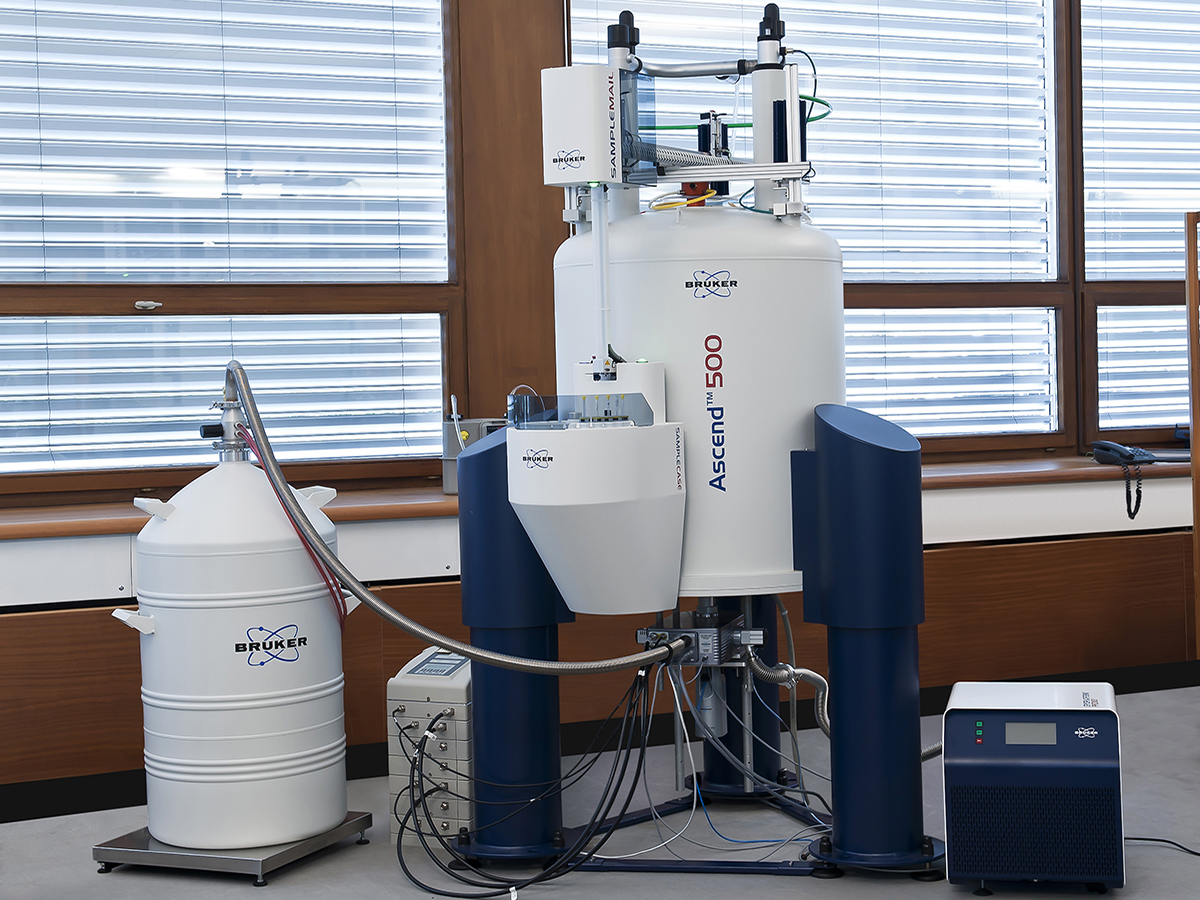Wichita State’s Fairmount College of Liberal Arts and Sciences recently received a grant from the National Science Foundation Major Research Instrumentations program (NSF MRI) for a 500 MHz Nuclear Magnetic Resonance (NMR) Spectrometer.
With the money from the grant, WSU is acquiring a high-tech NMR machine that — instead of providing traditional medical images we think of from a magnetic resonance imaging instrument (MRI) — will instead allow WSU researchers to map out or model a three-dimensional image of a protein (or smaller) molecule.
Dr. Jim Bann, lead primary investigator (PI) on the grant and Department of Chemistry and Biochemistry associate professor and undergraduate coordinator, says having a piece of equipment of this caliber on campus will greatly expand research and training options at WSU and for others in the region, especially when it comes to COVID research.
“The machine has the capability to solve the three-dimensional structures of proteins and other complicated macromolecules, as well as structures of molecules important in research related to COVID-19, while simultaneously serving the high demand for routine chemical characterization,” Bann said.
Dr. Bill Groutas, Wichita State medical chemist who is part of a team that has published a study showing a possible therapeutic treatment for COVID-19, says the addition of the NMR will allow his team to identify inhibitors of an essential enzyme the virus uses in viral replication.
Groutas said he and Kansas State University, University of Kansas and University of Iowa research groups have been engaged in the discovery of a protease inhibitor — an antiviral drug — for COVID-19. Some of the compounds the group has discovered are currently being evaluated in clinical trials.
Groutas says the NMR instrument will inform the design of antiviral drugs with higher potency, fewer side effects and better absorption, in addition to illuminating how the inhibitors work.
Bann said another benefit of WSU acquiring the NMR is that students can now be trained on how to use this high-end instrument, which will better prepare them for future job opportunities.
“Before this acquisition, we would need to drive hours to either OSU, KU or K-State to do the kinds of NMR experiments needed to solve protein structures. We can now do this in-house.”
The NMR spectrometer will be important to researchers in the Department of Chemistry and Biochemistry who work on proteins, new or novel materials, such as biomaterials, composites and polymers.
This grant is a multi-principal investigator (PI) grant that also involved the following researchers within the Department of Chemistry and Biochemistry:
- Dr Bill Groutas, distinguished professor and co-investigator-PI
- Dr. Moriah Beck, professor and co-investigator-PI
- Dr. Haifan Wu, assistant professor and co-investigator-PI
- Dr. Katie Mitchell-Koch, associate professor and co-investigator-PI
- Dr. Coleen Pugh, vice provost for research and dean of WSU’s Graduate School
- Dr. David Eichhorn, associate dean for faculty development and research
“This grant for a new NMR spectrometer is especially important to WSU because it is the first NSF MRI award we have received in 18 years, and the fourth in WSU’s history,” said Pugh.
Bann added that the central location of the NMR will draw more researchers to Wichita State and increase collaborative work as students will still have to physically train on the NMR.
“The unique capabilities of this instrument will also be open to surrounding colleges, universities and industry, affording them the opportunity to have remote access to the instrument because faculty and students can run the instrument from their home base, without having to drive hours to come to Wichita to physically run a sample,” Bann said.
In addition to WSU, other institutions that contributed to the grant application include Benedictine College, Tabor College, Fort Hays State University, Bethel College, Washburn University and McPherson College.
The spectrometer is expected to be delivered in the next six to eight months.


